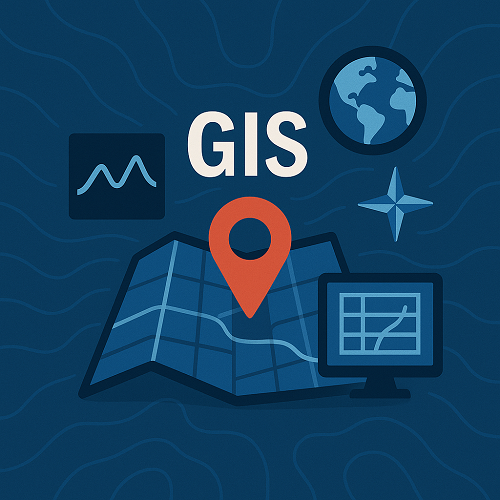TL;DR
- GIS is rapidly evolving with AI, VR, and cloud-native architectures driving innovation.
- Esri leads with advanced tools, new developer APIs, and global partnerships.
- The GIS market is projected to see significant growth through 2030 due to cross-sector adoption.
- Businesses are leveraging GIS for smarter decision-making, real-time analytics, and immersive visualization.
- Integration with digital twins and IoT sensors is unlocking next-gen geospatial insights.
What’s new right now
In 2025, the GIS industry continues an upward trajectory, with emerging integrations shaping the market. According to recent announcements, Esri has introduced AI-powered spatial analytics tools that enable predictive modeling at unprecedented scale. Partnerships between GIS vendors and VR/AR developers are producing immersive geospatial experiences, helping industries like urban planning and environmental management visualize scenarios before implementation.
Market research shows the GIS sector will grow steadily over the next five years, driven by demand for real-time, cloud-based geospatial intelligence (source).
Why it matters
For business leaders, modern GIS offers more than map-making—it provides a strategic asset. With AI-enabled pattern recognition, enterprises can detect risks and opportunities faster. VR integration enables stakeholders to interact with data in lifelike 3D, improving collaboration and project buy-in.
For technical teams, cloud-native GIS architectures allow scalable computing, integration with IoT feeds, and advanced analytics pipelines. This results in reduced infrastructure costs while delivering richer, actionable insights.
Deep Dive: Key Trends in GIS 2025
1. AI-Driven Spatial Analytics
Artificial intelligence is transforming how GIS processes massive datasets, from satellite imagery to drone captures. Automated feature extraction and predictive heatmaps let analysts focus on interpretation rather than tedious data prep.
2. VR and Immersive Mapping
Virtual reality integration is enhancing stakeholder engagement. Urban planners can now ‘walk through’ proposed developments virtually, assessing environmental impact and urban design before ground is broken.
3. Real-Time Data Streams
Linking GIS platforms with IoT and remote sensing allows real-time environmental monitoring, vital for disaster response and smart city operations.
Comparison Table: GIS Approaches
| Approach | Key Benefit | Example Use Case |
|---|---|---|
| AI-Enhanced GIS | Automates analysis and prediction | Wildfire risk mapping |
| VR/AR GIS | Immersive stakeholder engagement | Urban development simulations |
| Cloud-Native GIS | Scalable and accessible anywhere | Field data collection for utilities |
Mini Case Study: Smart Flood Management
Problem: A coastal city faced recurring flood damages, with outdated floodplain maps and slow emergency response.
Approach: The city implemented a cloud-based GIS platform integrating IoT water-level sensors, AI flood modeling, and VR for community planning workshops.
Outcome: Flood prediction accuracy improved by 35%, emergency response times dropped by 20%, and VR-based citizen engagement increased participation in preparedness programs by 50%.
Implementation Checklist
- Assess current geospatial capabilities and data quality.
- Define clear goals for GIS integration (e.g., risk prediction, asset tracking, urban planning).
- Select a scalable GIS platform with AI and real-time data compatibility.
- Integrate IoT, remote sensing, or survey datasets as needed.
- Develop immersive visualization workflows using VR/AR where beneficial.
- Train staff on GIS tools, analytics, and interpretation techniques.
- Monitor performance metrics and iterate for continuous improvement.
FAQs
What is driving the growth of GIS in 2025?
Integration with AI, VR, and IoT, along with broader cloud adoption, is significantly accelerating GIS applications across industries.
How does VR enhance GIS?
VR creates immersive environments for spatial data, improving understanding and decision-making in design, planning, and crisis management.
Is AI replacing GIS analysts?
No, AI is augmenting analysts by automating repetitive tasks, enabling them to focus on interpretation and strategic insights.
Which industries use GIS most in 2025?
Urban planning, environmental monitoring, logistics, agriculture, and emergency management are key adopters.
How can small businesses leverage GIS?
Cloud-based GIS lets small firms access powerful spatial analytics without heavy infrastructure investments.
Conclusion
The latest GIS developments in 2025 underscore its role as a cross-sector catalyst for smarter, data-driven decision-making. By embracing AI, VR, and real-time analytics, organizations can turn geographic data into actionable advantage. To start your transformation journey, you can explore our GIS services today.
